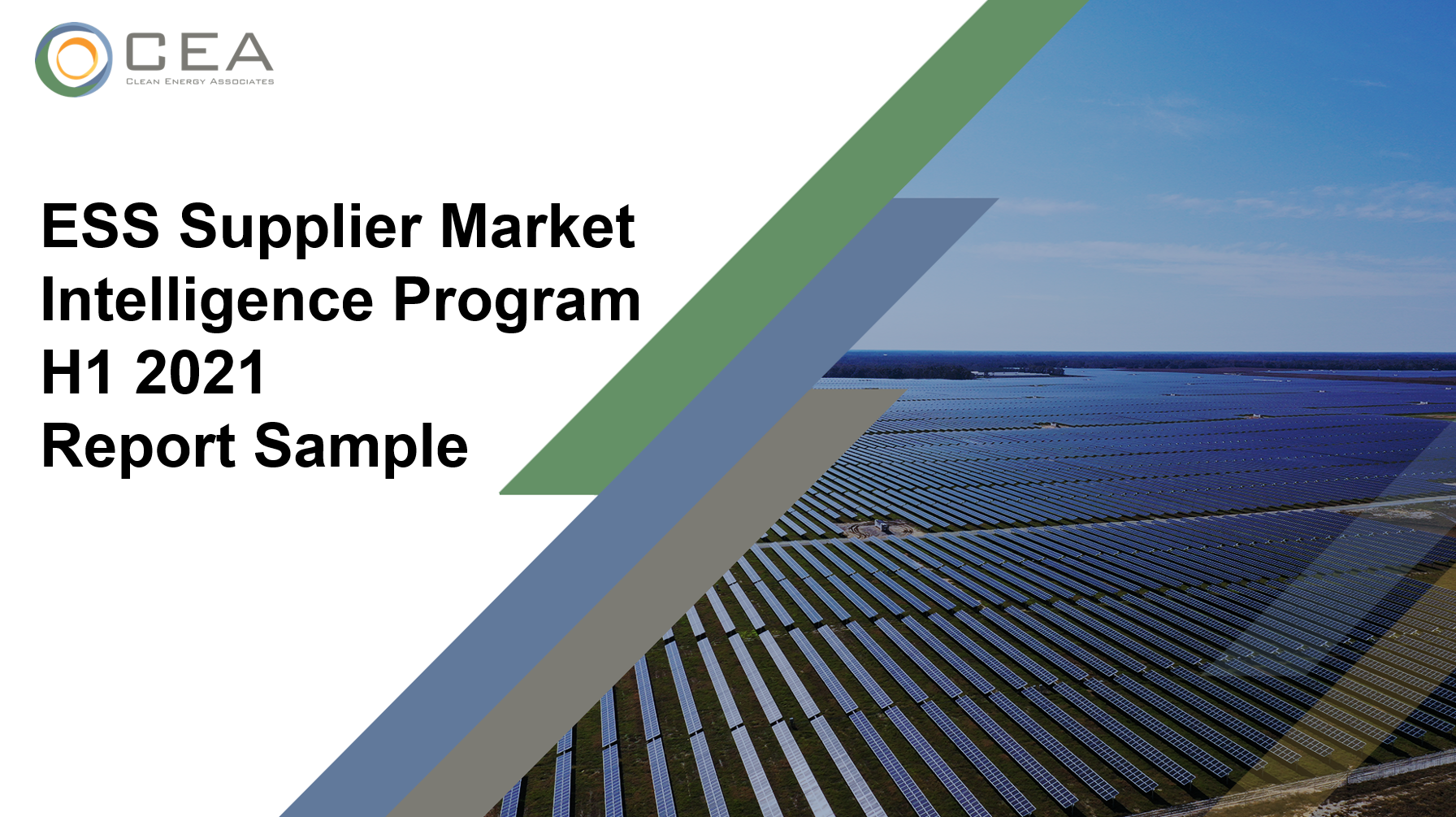Microcracks are tiny cracks in solar cells that can be caused during manufacturing, shipping, installation, and even after installation and can limit the power output of a module or a series string of modules.
Read MoreIn this episode, Flexpat host, Francis Kremer, interviews CEA’s Founder and CEO, Andy Klump, about his personal experience building a company from China.
Read MoreThe latest PV Supplier Market Intelligence report examines the global expansion of polysilicon capacity - with almost all new capacity happening outside Xinjiang following recent political movements.
Read MoreJune 2021 batch of energy yield results from the pv magazine outdoor test field in Xi’an, China. A new product from LONGi was added in the field (#37).
Read MoreIn this podcast, Suncast host Nico Johnson speaks with CEA’s Vice President in Sales and Marketing, Darryl Parker about taking a customer-centered approach to sales and marketing.
Read MoreCustoms’ WRO on Hoshine means any importer that cannot prove to Customs their solar panels do not contain mg-Si from Hoshine can have their shipment excluded from entry into the U.S.
Read MoreAndy Klump, joins the ChinaTalk podcast to discuss how Chinese firms came to dominate the solar industry and with recent US import bans, how the global solar supply industry will adapt.
Read MoreThis video covers the 2021 available polysilicon production capacity for solar vs the forecasted installations with Joseph Johnson, Manager of Market Intelligence at CEA
Read MoreThis video forecasts production and market trends of solar wafers over the next few years with Joseph Johnson, Manager of Market Intelligence at CEA.
Read MoreThis video forecasts production and market trends of solar cells over the next few years with Joseph Johnson, Manager of Market Intelligence at CEA.
Read MoreThis video forecasts production and market trends of solar modules, specifically the impact of subcomponent supply on module manufacturing, with Joseph Johnson, Manager of Market Intelligence at CEA.
Read MoreMay 2021 batch of energy yield results from the pv magazine outdoor test field in Xi’an, China. This is the first batch of data generated after the outdoor test field was rebuilt with data starting from May 7.
Read MoreThe Washington Post interviewed CEA’s CEO, Andy Klump, in a recent article covering recent news covering US legislation surrounding sub-components of the solar supply chain and the cost of moving supply chains outside China.
Read MoreThis webinar covers what to expect in the coming year as high-power modules continue to roll out: capacity forecasts, cost and price drivers influencing supplier decisions, technological benefits and risks, and what precautions or adjustments asset developers and owners should consider when purchasing high power modules.
Read MoreAs a participant in pv magazine’s Roudtables Europe 2021, CEA’s Director of Technology and Quality, George Touloupas, discusses what issues to the BoM new Large Format Modules pose.
Read MoreAndy Klump speaks with Currents to discuss how supply chain traceability can improve transparency in the solar supply chain as well as concerns over polysilicon that many financiers and developers have due to their ESG-minded stakeholders.
Read MoreLacking the ‘shock and awe’ factor of previous years, the real highlights of SNEC’s PV Power Expo were the record-breaking cell efficiency levels, TOPCon taking the lead amongst n-type modules, and new cell designs for 210 mm wafers.
Read MoreCEA’s survey of major industry players suggests the energy storage industry is in for an explosive five-year growth period as global lithium-ion battery cell production capacity is expected to exceed 2,500 GWh by the end of 2025 with year-on-year growth despite COVID-19.
Read MoreThe latest Energy Storage System (ESS) Supplier Market Intelligence report finds that despite a 4% decline in global energy storage deployment due to COVID-19, worldwide lithium-ion battery deployment increased by 24%, from 17 GWh in 2019 to 21 GWh in 2020.
Read MoreUnprecedented PV capacity expansions and massive technology changes, all at a frantic pace, have created new technical and quality risks. CEA analyzes the data from our quality audits to identify the areas of greatest concern.
Read More



















